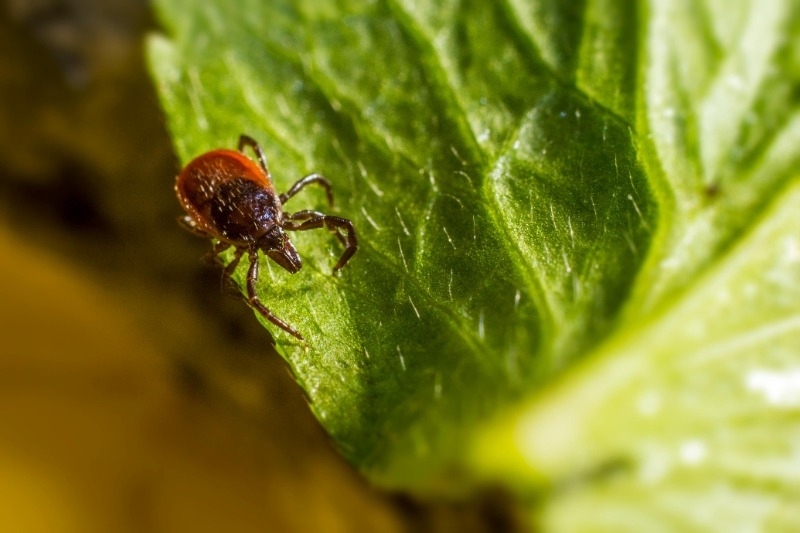Tick Illnesses a Concern in South Heartland Health District
May 15, 2025
Hastings, Nebraska – The district health department for Adams, Clay, Nuckolls and Webster counties is notifying residents to protect themselves from tick bites.
South Heartland District Health Department (SHDHD) executive director Dr. Michele Bever warned residents this week that tick species found within the health district can carry pathogens that cause serious illnesses.
“We encourage residents and visitors alike to protect themselves from exposure to ticks and tick bites,” she said. “The highest risk of being bitten occurs during the spring and summer, so if you are spending any time in tick habitat, now is the time to make sure you are doing frequent tick checks. Prompt removal of ticks decreases the likelihood of a tick spreading disease.”
Exposure to tick bites is a concern because of the serious illnesses they can carry. Tick-borne illness may lead to debilitating symptoms and may also be fatal if untreated. Bever said tick trapping in the health district over the past four years yielded primarily American dog ticks (Dermacentor species). Some of these collected ticks have tested positive for rickettsia, which can cause Rocky Mountain spotted fever and other rickettsia illnesses. These ticks can also transmit tularemia, and potentially ehrlichiosis.
Lone Star ticks (Amblyomma species) have also been collected in the South Heartland District. Lone Star ticks can transmit ehrlichiosis, tularemia, Heartland virus, Bourbon virus, and Southern Tick-Associated Rash Illness (STARI). Additionally, bites from this tick have been associated with allergy alpha-gal syndrome (AGS), commonly known as red meat allergy.
In 2019, established populations of the black-legged tick (Ixodes species), also called deer tick, were detected for the first time in eastern Nebraska (Douglas, Sarpy, and Saunders counties). This tick, a carrier (vector) of Lyme disease, has now been reported or confirmed in seven additional Nebraska counties (but not in South Heartland’s counties).
“The geographic distribution of tick species can change over time based on changes in the environment, such as deforestation, changes in numbers or movement of host populations (white-tailed deer for black-legged ticks, for example), and climate warming. And, since south central Nebraskans don’t just stay here in south central Nebraska, we also have the potential to be exposed to different tick species when we visit other parts of Nebraska or other states,” Bever said. “That’s why it is important to know how to protect yourself from tick bites.”
“If you want to know more about ticks, including what they look like, where they have been found in Nebraska, and what pathogens they carry, check out the Tick-Borne Disease Data and Statistics webpage and Tick Surveillance Maps maintained by Nebraska Department of Health and Human Services,” Bever suggested. The tick maps and information can be found at https://dhhs.ne.gov/Pages/Tick-Borne-Disease-Data-and-Statistics.aspx.
If you spend time outside working or enjoy outdoor recreation, the following tips will reduce your risk of illness caused by ticks:
- Wear light-colored clothing which makes it easier to spot ticks that have attached themselves to your clothing. Tuck long pants legs into your socks to prevent ticks from crawling inside pants legs.
- Use chemical insect repellents containing DEET or Permethrin. Read and follow the label directions prior to application of these products. Repellents containing DEET will also keep mosquitoes away.
- Avoid walking through tall grass and brush while camping or working outdoors.
- Perform thorough tick checks at least daily if you have been outside in areas that could be infested with ticks. Check everywhere a tick could hide: under the arms, in and around ears, inside the belly button, as well as in and around hair. Be sure to check children or older adults carefully after they have played or worked outside.
Bever emphasized that South Heartland residents have been affected by illnesses carried by ticks and mosquitoes. “In the last decade, residents from our health district have been diagnosed with Ehrlichiosis, Rocky Mountain spotted fever (Rickettsiosis), and Lyme disease,” she said. “It’s so important to make sure you and your loved ones are protected from exposure to these disease carriers.”
For more information, visit www.southheartlandhealth.ne.gov or call SHDHD at 402-462-6211
##


 Launch the media gallery 1 player
Launch the media gallery 1 player